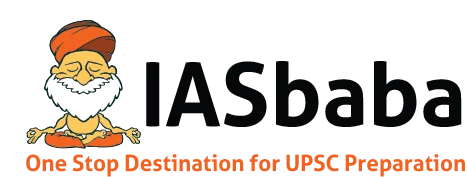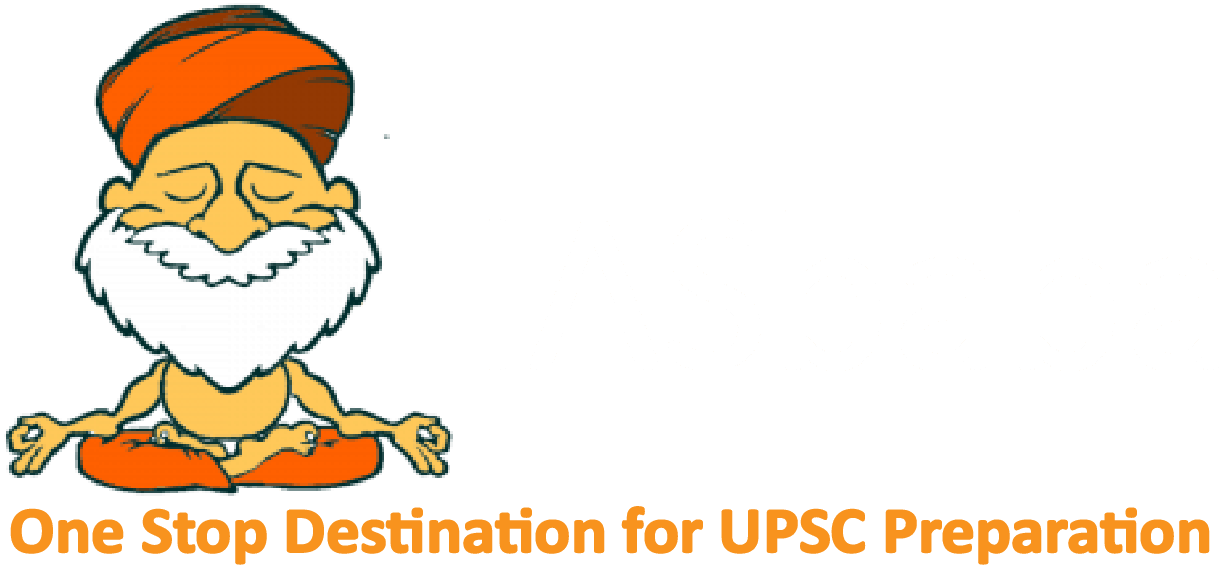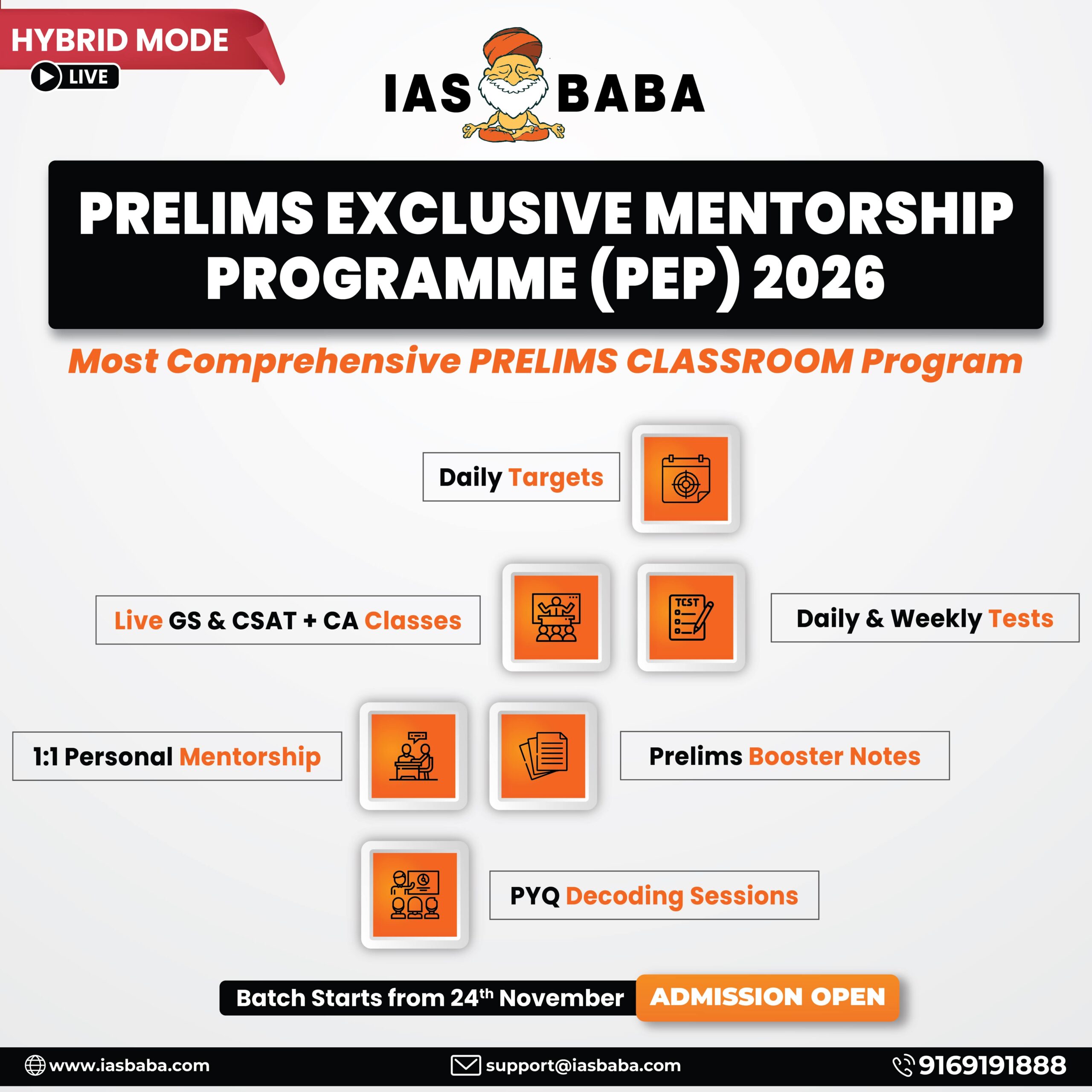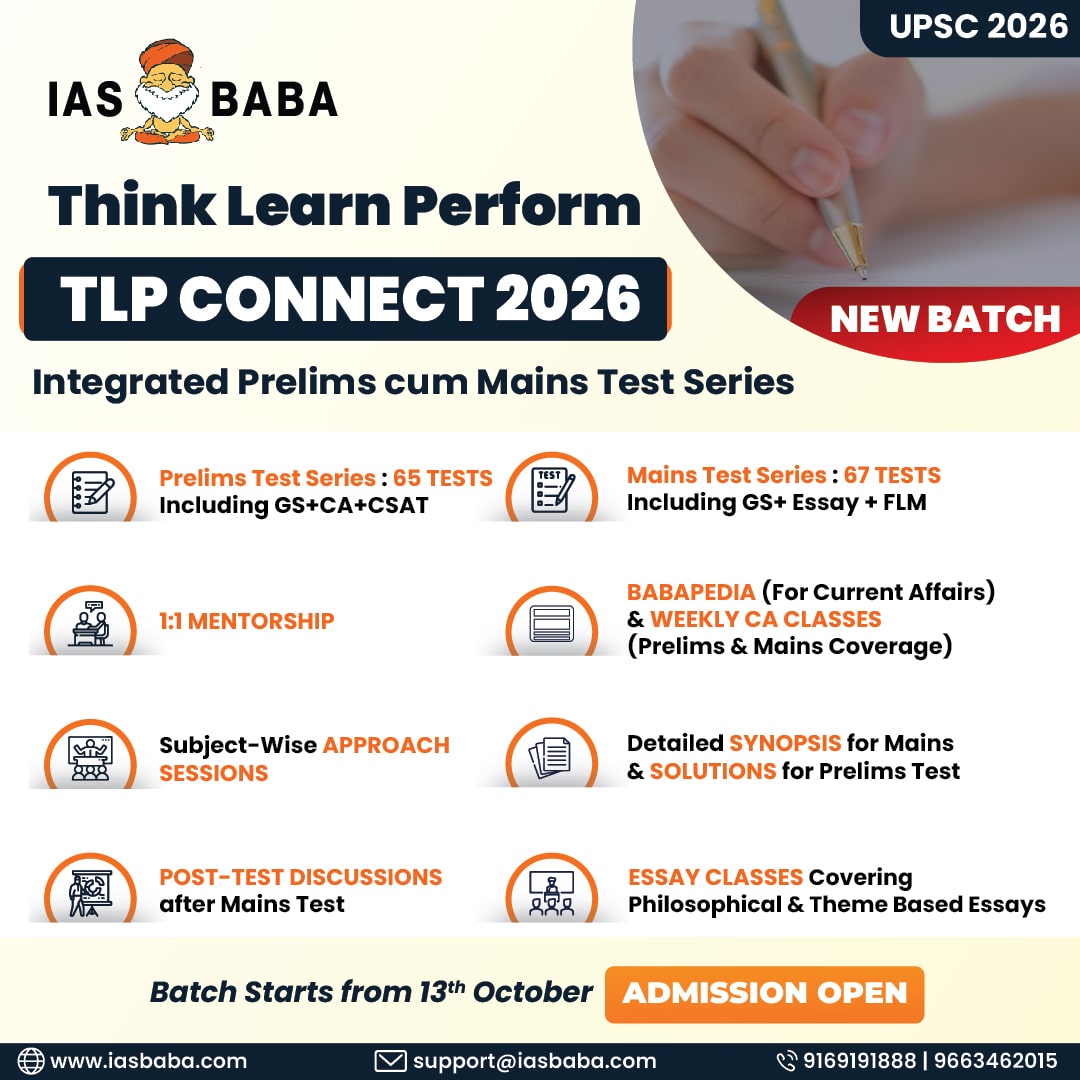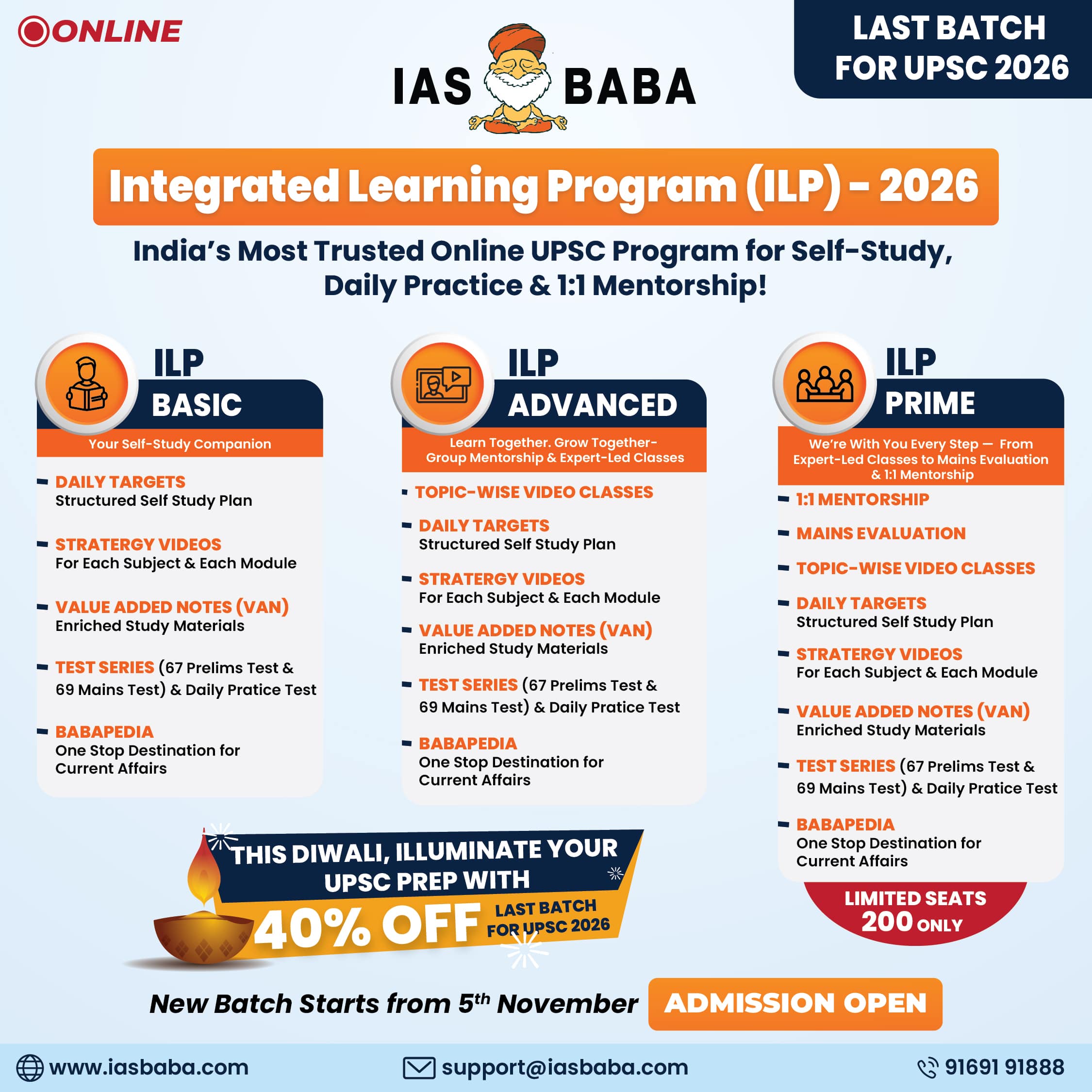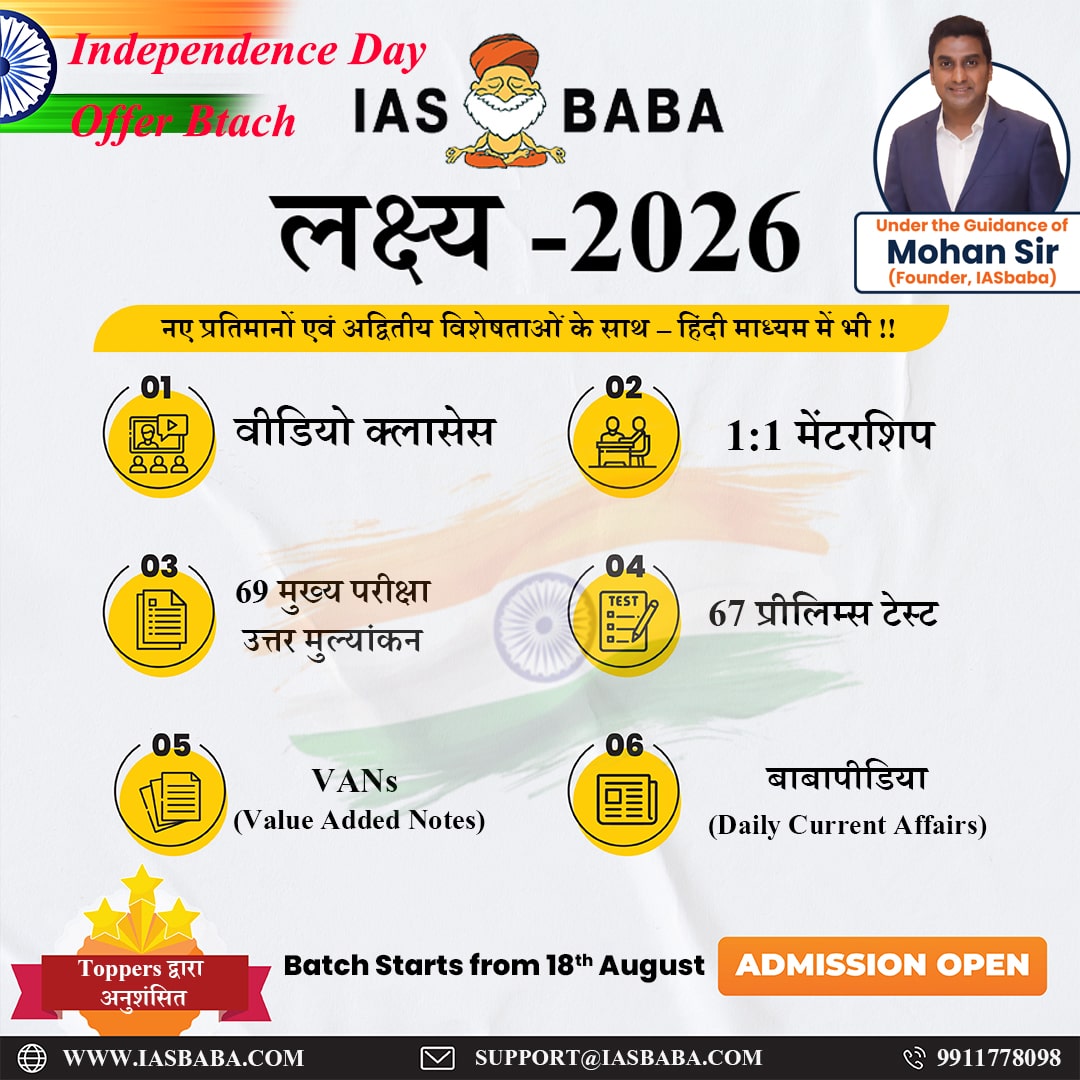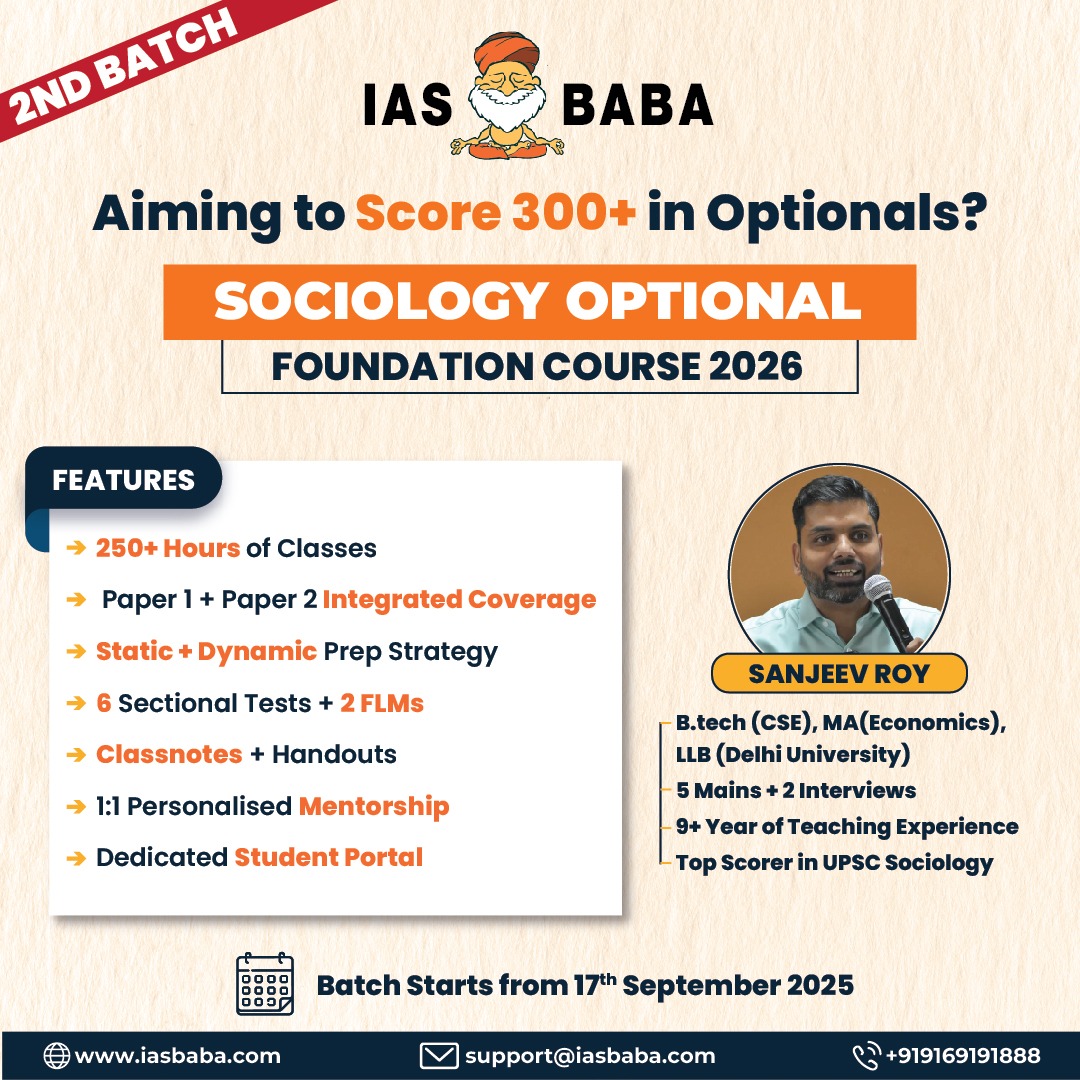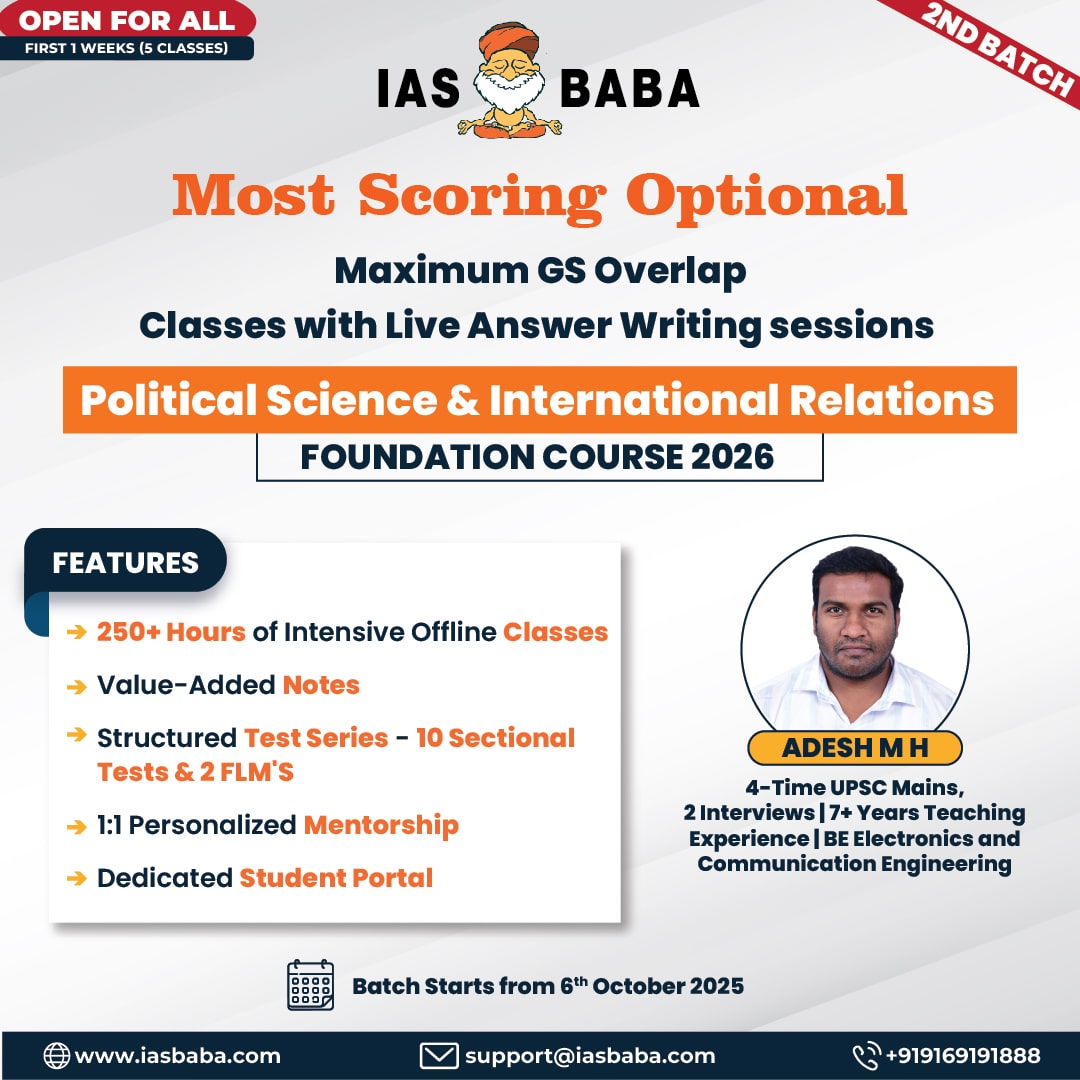IASbaba's Daily Current Affairs Analysis
Archives
(PRELIMS Focus)
- Category: International Relations
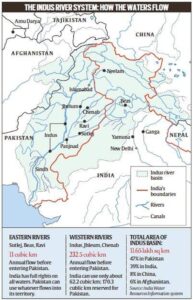
- Context:
- Writers are beginning to explain the ramifications of the suspension of the Indus Water Treaty, which was a shared heritage between India and Pakistan.
About Indus Water Treaty (IWT):
- Parties: Indus Waters Treaty was signed on September 19, 1960, between India and Pakistan and was brokered by the World Bank.
- Objective: The treaty sets out a mechanism for cooperation and information exchange between the two sides on the use of the water of the Indus River and its five tributaries Sutlej, Beas, Ravi, Jhelum, and Chenab.
- Allocation of rivers: It prescribes how water from the six rivers of the Indus River System would be shared between India and Pakistan. It allocated the three western rivers Indus, Chenab and Jhelum to Pakistan for unrestricted use, barring certain non-consumptive, agricultural and domestic uses by India and the three Eastern rivers Ravi, Beas and Sutlej were allocated to India for unrestricted usage.
- Permanent Indus Commission: Under the Indus Waters Treaty, both countries must set up a Permanent Indus Commission, mandated to meet annually.
- Dispute Resolution Mechanism:
- The IWT provides a three-step dispute resolution mechanism under which “questions” on both sides can be resolved at the Permanent Commission, or can also be taken up at the inter-government level.
- Unresolved differences between the countries on water-sharing can be addressed by the World Bank-appointed Neutral Expert (NE).
- Appeal from a Neutral Expert of WB can be referred to a Court of Arbitration set up by the World Bank.
- Major projects under IWT:
- Pakal Dul and Lower Kalnai: Pakal Dul Hydro Electric Project is built on river Marusudar, a tributary of the Chenab. Lower Kalnai is developed on the Chenab.
- Kishanganga Hydroelectric Project: It is a run-of-the-river project located in J&K. Pakistan objected to the project arguing that it would affect the flow of the Kishanganga River (called the Neelum River in Pakistan). In 2013, The Hague’s Permanent Court of Arbitration (CoA) ruled that India could divert all the water with certain conditions.
- Ratle Hydroelectric Project: It is a run-of-the-river hydroelectric power station on the Chenab River, in J&K.
Source:
- Category: Science and Technology
Context:
- When cooled to just a few degrees above absolute zero, helium becomes a superfluid and can move freely without getting stuck, something impossible for any normal fluid.
About Helium:
-
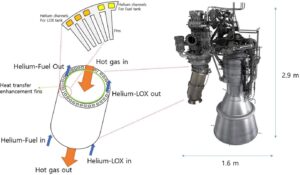
- Nature: It is an inert gas and does not react with other substances or combust.
- Atomic number: Its atomic number is 2, making it the second lightest element after hydrogen.
- Uniqueness: Helium has a very low boiling point (-268.9° C), allowing it to remain a gas even in super-cold environments.
- Non-toxic: The gas is non-toxic, but cannot be breathed on its own, because it displaces the oxygen humans need for respiration.
- Space technology: Helium is used to pressurize fuel tanks, ensuring fuel flows to the rocket’s engines without interruption; and for cooling systems. As fuel and oxidiser are burned in the rocket’s engines, helium fills the resulting empty space in the tanks, maintaining the overall pressure inside.
- Easy detection of leaks: Its small atomic size and low molecular weight mean its atoms can escape through small gaps or seals in storage tanks and fuel systems. But because there is very little helium in the Earth’s atmosphere, leaks can be easily detected – making the gas important for spotting potential faults in a rocket or spacecraft’s fuel systems.
Source:
- Category: Polity and Governance
Context:
- The Union Cabinet has approved the Terms of Reference of the 8th Central Pay Commission (CPC), the body in charge of deciding the pay structure and retirement benefits of central government employees.
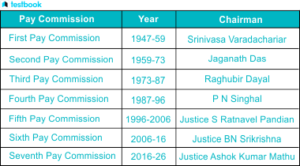
About 8th Central Pay Commission (CPC):
- Nature: The 8th Central Pay Commission (CPC) is a temporary expert body set up by the Union Government to review and recommend revisions in the salary structure, allowances, and pension benefits of Central Government employees.
- Establishment: It was announced in January 2025 and formally constituted after Cabinet approval in October 2025 to ensure timely implementation from 2026.
- Composition: It has 3 members. It is headed by Justice Ranjana Prakash Desai (Retd.) and the other two members include Prof. Pulak Ghosh (IIM Bangalore) and Pankaj Jain, IAS (Petroleum Secretary).
- Tenure: The Commission will submit its final report within 18 months of constitution and may provide interim recommendations on specific issues.
- Coverage: The 8th CPC covers serving and retired employees of the Central Government, defence forces, All India Services, and Union Territories.
- Functions: It will examine and propose changes in pay scales, allowances, and pension structures. It will also consider the overall economic situation and maintain budgetary discipline while recommending pay revisions.
- Equity Across Sectors: It will ensure parity between Central services, PSUs, and private sector employees in terms of emoluments and working conditions.
- Sustainability of Pensions: It will address concerns related to non-contributory pension liabilities and their long-term fiscal implications.
- Expected Implementation: The recommendations are expected to come into effect from January 1, 2026, continuing the decade-long cycle of pay revisions followed since the First CPC (1946).
Source:
- Category: Defence and Security
Context:
- The Hindustan Aeronautics Limited (HAL) and Russia’s United Aircraft Corporation (UAC) have signed a Memorandum of Understanding for production of civil commuter aircraft SJ-100.
About SJ-100 Aircraft:
-

- Nature: It is a new generation short-haul jet aircraft of Russian origin. It is a twin-engine, narrow-body aircraft.
- Design: Earlier called the Sukhoi Superjet 100, it originally was designed by the now-merged Russian aircraft company Sukhoi Civil Aircraft.
- Operation: The aircrafts are being operated by more than 16 airlines across the world, nine of them being from Russia.
- Uses: The aircraft is primarily used for commercial purposes. It can operate at extreme weather conditions, from -55 degrees Celsius to +45 degrees Celsius.
- Seating capacity: It is capable of accommodating 103 seats and has a flight range of 3,530 kilometres. The aircraft has been touted as having low operating costs for airlines.
- Significance for India: The SJ-100 can be a game changer for short-haul connectivity under the UDAN Scheme and marks a major stride towards achieving ‘Aatmanirbharta’ in civil aviation.
Source:
- Category: Polity and Governance
Context:
-
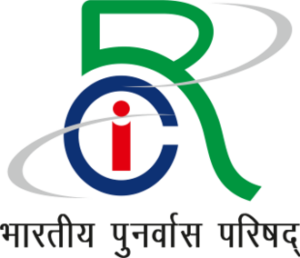
- In a decisive move, the Rehabilitation Council of India (RCI) has announced a sweeping set of reforms designed to bring transparency, efficiency and inclusivity to the rehabilitation ecosystem across the country.
About Rehabilitation Council of India (RCI):
- Nature: It is a statutory body established by an Act of Parliament.
- Establishment: It was set up as a registered society in 1986. In 1992 the RCI Act was enacted by Parliament and it became a Statutory Body in 1993. The Act was amended by Parliament in 2000 to make it more broad-based.
- Objective: It aims to regulate and monitor services given to persons with disabilities, to standardise syllabi and to maintain a Central Rehabilitation Register of all qualified professionals and personnel working in the field of Rehabilitation and Special Education.
- Nodal Ministry: It comes under the Ministry of Social Justice & Empowerment.
- Functions: It regulates the training policies and programmes in the field of rehabilitation of persons with disabilities. It brings about standardization of training courses for professionals dealing with persons with disabilities.
- Recognition to associated institutions: It recognizes the national institutes and apex institutions on disability as manpower development centres. The Council also prescribes minimum standards of education and training for 16 categories of professionals and personnel allocated to RCI.
- Important laws in India to deal with disabilities:
- Indian Lunacy Act, 1912
- Mental Health Act, 1987
- Rehabilitation Council of India Act, 1992
- Persons With Disability Act, 1995
- National Trust Act, 1999
- Right To Education Act, 2010
Source:
(MAINS Focus)
(GS Paper 3: Environment – Pollution and Degradation; Science and Technology – Developments and their Applications and Effects in Everyday Life; Disaster and Disaster Management)
Context (Introduction)
Delhi’s failed cloud seeding experiment aimed at inducing artificial rain highlights the limited effectiveness of weather modification technology and the city’s overdependence on temporary fixes rather than sustained, science-backed solutions for its chronic air pollution problem.
Main Arguments
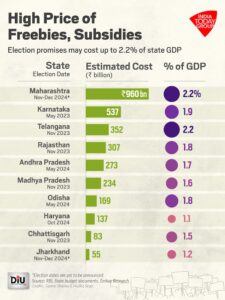
- About Cloud Seeding Technology: Cloud seeding involves dispersing substances like silver iodide or sodium chloride into clouds to induce precipitation. It is primarily designed for drought mitigation, not air purification.
- Scientific Mechanism: The technique depends on the presence of moisture-laden clouds, proper temperature, and wind conditions. Delhi’s autumn clouds lacked sufficient moisture, resulting in only 0.3 mm of rainfall over Noida.
- Global Uncertainty: The World Meteorological Organisation (WMO) and Indian Institute of Tropical Meteorology acknowledge high variability in results. Success depends heavily on atmospheric conditions, making it unreliable for consistent outcomes.
- Limited Impact on Pollution: Even if rainfall is achieved, it only gives localized and temporary relief by settling suspended particulates. It cannot remove deep-rooted emission sources or improve overall air quality sustainably.
- Policy Desperation: The Delhi government’s attempt reflects a pattern of post-Diwali crisis management. Despite robust CPCB and satellite-based data on pollution sources, governance remains reactive and fragmented.
Criticisms / Drawbacks
- Temporary Measure: Artificial rain offers short-term respite but fails to address emission sources such as vehicles, industries, stubble burning, and road dust that drive year-round pollution.
- Environmental Concerns: Chemicals like silver iodide can contaminate water bodies and affect aquatic life if used repeatedly without monitoring.
- Institutional Weakness: The Commission for Air Quality Management (CAQM) lacks enforcement powers across states, leading to weak regional coordination.
- Municipal Gaps: Simple interventions like road dust control, waste management, and green buffers are poorly executed due to administrative overlaps and lack of accountability.
- Public Health Impact: According to The Lancet (2022), over two million premature deaths in India annually are linked to air pollution — highlighting the gravity of inaction and ineffective policy design.
Reforms and Way Forward
- Airshed-based Regional Planning: Form a National Capital Region (NCR) Airshed Management Framework integrating emission data, meteorological patterns, and mitigation strategies across Delhi, Haryana, Punjab, and Uttar Pradesh.
- Institutional Empowerment: Strengthen CAQM with statutory powers similar to the National Green Tribunal (NGT) for stricter compliance and inter-state coordination.
- Science-led Policy: Establish real-time source apportionment models, low-cost air quality sensors, and integrate findings into municipal and state-level action plans.
- Urban Design and Mobility Reforms: Expand electric vehicle networks, promote non-motorized transport, develop urban forests, and implement dust suppression through water sprinkling and permeable pavements.
- Fiscal and Policy Incentives: Introduce green municipal budgeting and provide financial incentives for industries adopting cleaner fuels and emission control technologies.
- Public Engagement: Foster citizen participation through air quality monitoring apps, awareness campaigns, and community-based pollution management initiatives.
- Research Collaboration: Encourage joint studies by IITs, IMD, and MoES on long-term atmospheric patterns and innovations in clean technology, such as bioaerosol and nanotech filtration.
Conclusion
Delhi’s cloud seeding experiment serves as a reminder that technology cannot substitute systemic reform. Artificial rain may wash the skies briefly, but only sustained governance, regional cooperation, and institutional accountability can ensure clean air for Delhi’s citizens. The solution lies not in chasing clouds but in reforming ground-level policy.
Mains Question
- “Technological quick fixes like cloud seeding offer temporary relief but fail to resolve the structural causes of Delhi’s air pollution. Discuss in light of the need for regional and institutional reforms. To tackle chronic air pollution in Indian cities. (250 words, 15 marks)
Source: The Indian Express
(GS Paper 2: Governance – Welfare Schemes, Issues in Implementation and Governance Accountability; GS Paper 3: Economy – Fiscal Prudence )
Context (Introduction)
The 2025 Bihar Assembly election reflects India’s growing crisis of competitive populism, where pre-election freebies worth over ₹8 lakh crore overshadow welfare intent, distort fiscal priorities, and blur the line between social justice and political bribery.
Main Arguments

- Elections as Auctions: Indian elections increasingly resemble auctions, where state treasuries are used to buy votes. In Bihar, poll promises exceed three times the annual state budget, undermining fiscal discipline.
- Weaponisation of Welfare: Welfare, originally a constitutional duty to secure basic needs, is being misused as an electoral currency. Populism has transformed welfare into vote-buying rather than nation-building.
- Distinction Between Welfare and Freebies: – Welfare strengthens human capability — e.g., education, food, health, pensions. –
Freebies generate dependency and short-term satisfaction — e.g., cash transfers weeks before elections. Mid-day meals or MGNREGA create empowerment, unlike unproductive handouts.
- Double Standards in Economic Policy: Benefits to corporates are often termed “reforms,” while aid to the poor is labelled “freebies.” The 2019 corporate tax cut cost ₹1.45 lakh crore yearly, yet was celebrated as bold economics.
- Legal and Ethical Loopholes: The Supreme Court’s 2013 judgment (S. Subramaniam Balaji vs State of Tamil Nadu) ruled that manifesto promises do not constitute “corrupt practices” under the RPA, leaving space for misuse.
- Moral Paradox: Offering a cup of tea to a voter is bribery under Section 123(1) of the RPA, but promising ₹2,500 monthly to millions is legally acceptable. This inconsistency erodes electoral integrity.
- Fiscal and Economic Risks: The RBI’s Report on State Finances 2022–23 warned that populist subsidies threaten fiscal collapse. Punjab’s debt-to-GSDP ratio reached 47.2%; Rajasthan’s pre-poll spending crossed ₹56,000 crore.
- Socioeconomic Inequities Persist: Despite welfare rhetoric, inequality deepens — the richest 1% own 51.5% of India’s wealth (Oxfam 2022). India ranks 130th in HDI; one-third of children remain malnourished, and 81 crore depend on free rations.
Criticisms / Drawbacks
- Erosion of Democratic Ethos: Freebies convert elections into fiscal auctions, reducing citizens to beneficiaries rather than empowered voters.
- Distortion of Fiscal Priorities: State budgets are diverted from long-term investments (education, health, infrastructure) to short-term populism.
- Weak Legal Oversight: Absence of clear guidelines allows manifestos to remain outside electoral accountability, encouraging reckless promises.
- Ethical Governance Deficit: Politicians misuse the Model Code of Conduct window to announce schemes, exploiting administrative gaps before EC intervention.
- Dependency Syndrome: Freebies weaken productivity and discourage self-reliance, especially among youth seeking sustainable livelihoods.
Reforms and Way Forward
- Define and Regulate Freebies: Establish a constitutional or statutory body under the Election Commission to distinguish legitimate welfare from electoral bribes.
- Mandatory Costed Manifestos: Political parties must publish audited, costed manifestos explaining funding sources — whether through taxes, loans, or budget cuts.
- Amend Representation of People Act (RPA): Classify direct cash transfers to voter groups before elections as “corrupt practices” under Section 123.
- Pre-election Fiscal Code: Prohibit the announcement of new subsidies or direct benefit schemes within six months of election notification.
- Performance-linked Welfare: Prioritise welfare linked to outcomes — education, job creation, irrigation, and healthcare — over consumption-based subsidies.
- Transparency and Accountability: Mandate annual disclosure by state finance departments on fiscal impact of welfare schemes and their developmental returns.
- Public Awareness and Voter Education: Promote informed voting through EC and civil society initiatives highlighting fiscal literacy and ethical governance.
Conclusion
India needs honest welfare, not hollow populism. Welfare must empower citizens through health, skills, and education — not lure them through cash doles. A democracy that survives on freebies risks both fiscal bankruptcy and moral decay. True welfare is nation-building; reckless populism is nation-draining.
Mains Question
“Freebies and fiscal populism threaten the integrity of India’s democratic and economic system. Discuss how India can institutionalise ‘honest welfare’ while preserving fiscal discipline and electoral fairness.” (250 words)
Source: The Indian Express
